I generally spend several hours washing and sometimes more thoroughly detailing the family cars every few weekends or so, in between the quicker clean-ups, of course. In this article, I’ll walk you through my car wash process and introduce you to the tools and chemicals I personally use (please read the little disclaimer at the very bottom of this page regarding those links, since there are so many). And while I did run a successful detail shop back in the day, the stuff I’m recommending here isn’t commercial grade, as most of you won’t need that level of chemical or equipment for a pro-level driveway wash-up.
By request, we’ve added a list of all products mentioned in this article to an Amazon.com wish list!
Table of Contents
The Critical Cool Down
First things first: you should always try to wash your car or truck in a shaded or even covered area. If the sun is bearing down on the vehicle, it will get super-hot, making almost every aspect of the wash much more difficult.
If you don’t have a shady spot available, you could use an [amazon link=”B00C2OKYGC” title=”instant canopy” /]. A canopy with at least one wall is even better so you can truly block the sun on the side where it’s most prominent during the wash. And if that’s not an option, wash your vehicle with a wand at the local DiY (presumably covered) coin-op car wash, then bring it back to your garage to finish up. Not ideal, but it’ll work.
Whatever you do—if you really care about your vehicle’s finish—don’t run it through a gas station car wash with rotating brushes. Just don’t, regardless of the arguments you may read or hear. ?
If you must wash your vehicle in direct sunlight, it’s better to do so in the earlier hours of the day, before the sun really starts heating things up. Similarly, you’ll want to keep your vehicle constantly wet, if working in direct sunlight. Otherwise, spots will form very quickly and may etch the finish, particularly if you’re using hard water and/or have a darker colored vehicle.
Outdoor spigots usually bypass residential water softeners. If it’s convenient, you could tap into the softener system’s output, but that will cost you a bit more if the system consumes salt. A simpler option might be a portable deionizer, such as a [amazon link=”B0056HDCUM” title=”CR Spotless Water System” /]. Soft or filtered water will have a major positive impact on your car washing experience. Soap will work better, rinsing will be easier, water spots will basically be eliminated and drying will be faster.
My Bucket List
Almost everyone I know uses a single bucket to wash their car or truck. They’ll wash the entire vehicle from top to bottom, wheels to bumpers using the same bucket of soapy water. If you have been doing the same, STOP IT!!
While you can buy [amazon link=”B00469HOOG” title=”very nice wash buckets” /] from commercial detail supply shops, you can also grab a few 5-gallon buckets from Home Depot for about $3 each. Get at least three and, for each bucket, buy a [amazon link=”B000N3W8J0″ title=”grit guard” /] designed specifically to be placed in the bottom of standard 5-gallon buckets. Don’t ignore this important piece of plastic, as it puts distance between your wash mitt and all that nasty grime sinking to the bottom of the bucket that you’ll have already removed from the vehicle during the washing phase.
Clean water is crucial for a safe and effective car wash, particularly when washing darker finishes. Without consistently clean water and a consistently clean wash mitt, you’ll start seeing nasty swirl marks and scratches in the finish under certain lighting conditions. Not cool.
Here’s how you’ll use the three buckets to keep things scratch-free:
- Bucket #1 – Soap and water for washing painted surfaces with your wash mitt.
- Bucket #2 – Clean water used to rinse the wash mitt being used with bucket #1.
- Bucket #3 – Soap and water for the separate wash mitt and brushes you’ll use on tires, wheels and other grimy areas.
Warning: Tire and wheel brushes, mitts and other tools should never be introduced into buckets #1 or #2 as outlined above, or vice versa. The wheels and tires bucket should only be used for the really nasty stuff—wheels, tires, the engine, door jambs, etc. To ensure you keep things properly separated, label your buckets.
Prep Talk: Soaps & Cleaners
Before you dive in and start rinsing things off, you’ll want to set everything up, including preparing your wash buckets, laying the proper towels and brushes out, etc. Two of your buckets (#1 and #3) will require different chemicals in each. For the wash bucket (#1) to be used on the painted surfaces of the vehicle only, you’ll want to use a premium car wash or foam. Do not use dish soap, as it will strip just about any wax or polish off of the vehicle.
If your vehicle isn’t all that dirty, I recommend using the very popular and trusted [amazon link=”B0009IQXFO” title=”Meguiar’s Gold Class Car Wash Shampoo & Conditioner” /]. If your vehicle shows visible dirt and grime—the kind you could (but never should) write “Wash Me!” in—I recommend using an adjustable foam sprayer, like the [amazon link=”B000XTH1GY” title=”Gilmour Foamaster” /], loaded with [amazon link=”B009OTW646″ title=”Honeydew Snow Foam Car Wash Soap and Cleanser Chemical Guys” /] to pre-soak your car or truck. You’ll then use the same product to wash the vehicle (more on that in a sec).
For the wheels and tires bucket (#3), you’ll need something a bit stronger than the car wash soap or foam you’ll be using to wash painted surfaces. For really grimy stuff, I’m a huge fan of a product called [amazon link=”B01J05YTU2″ title=”Super Clean” /]. I just love how the stuff leaves an almost egg-shell type sheen on tires, engine hoses, etc. after rinsing it off. I use it on the engine, tires, wheels, undercarriage and more of my Jeep. Follow the instructions, though—Super Clean is super-powerful. And we all know that with great power, comes great responsibility.?
On the wife’s brand new car, however, Super Clean is just too strong and unnecessary. Instead, I use products made specifically for tires and wheels. For newer cars that have been properly maintained (e.g., there isn’t three years worth of brake dust caked on the rims), I believe a hybrid tire and wheel cleaner, like [amazon link=”B000COU7M0″ title=”Mother’s Foaming Wheel & Tire Cleaner” /], can work just fine. For tougher brake dust or road salt scenarios (but not Super Clean tough), I like [amazon link=”B00F4PB8NE” title=”Griot’s Heavy-Duty Wheel Cleaner” /].
Most of the chemicals noted above are available in 16 or 24 ounce spray bottles. But even their own branded spray bottles usually fail before the product runs out. Since the day I owned my detail shop back in the 80s, I’ve had a hell of a time finding spray bottles that can withstand the various chemicals I’ve used for detailing. While I can’t say these are the best yet, the [amazon link=”B003ZATW42″ title=”chemical resistant spray bottles from Chemical Guys” /] have held up fairly well to trigger killing chemicals, like Super Clean.
Prep Talk: Mitts and Brushes
Now that you’ve selected which soaps and cleaners to use, you’ll need a couple of wash mitts and a few brushes to get the job done right. Two of your buckets need separate wash mitts: bucket #1 for washing painted surfaces and bucket #3 for the grimy stuff. I like the [amazon link=”B086HKHWZ4″ title=”Chemical Guys Chenille Premium Scratch-Free Microfiber Wash Mitt” /], but anything similar will do just fine.
For tires, wheels and other grimy stuff, I use a few different brushes. The first is what some call a lug nut brush. This is great for cleaning… you guessed it… lug nuts. Actually, it’s for cleaning the areas around the lug nuts. But it’s also a great all-around brush to agitate caked-on dirt and grime from engine parts, bumpers, trim, floor mats and more. I use [amazon link=”B01CWBDBFU” title=”Detail Buddy’s brushes” /], but like the wash mitts, anything similar will do. I also use these brushes and others on the interior (a different set, of course). You can also find [amazon link=”B07FSSFNFY” title=”brushes like these that attach to your cordless drill” /], which might be good for the really tough stuff.
Also for tires and wheels, I’ll use wheel woolies. These flexible tools are like giant Q-Tips for your wheels, allowing you to clean in areas that would otherwise be difficult to access. They come in a variety of sizes and are typically made of a premium wool (hence, the name). There are several brands available, but I like the [amazon link=”B00BJCN5XM” title=”Chemical Guys Wheel Woolies” /].
The Pre-Wash Sticky-Icky Check
Assuming your vehicle is cool to the touch, you’ll start by doing a walk-around. If there’s anything sticky or icky on the vehicle, now is the time to remove it—tar, gum, bugs, bird dung, etc. There are countless bug and tar removal products on the market, but before you spray anything, see if you can remove it with my favorite Quick Detailer from Meguires and a microfiber towel that won’t be used for anything else. Pre-soak the area and pick at it through the microfiber, then scoop it off. Don’t wipe the debris or you could scratch the finish. The beauty of microfiber is that it’s designed to pick stuff up.
For tougher stains, like tar, tree sap or the dreadful Love Bugs we have here in Florida a few times each year, I like [amazon link=”B0002LBGWI” title=”Stoner’s Tarminator” /] aerosol spray. This stuff will dissolve just about anything. I also keep a [amazon link=”B0002LAC6E” title=”Safe Scrub” /] handy for tougher jobs. These pads are sponge-like with a bite but safe enough—when used with soapy water—for clearcoats, glass, painted bumpers, etc.
It is important to note that you should never aggressively rub in one spot on your vehicle’s finish while attempting to remove tough stains, like tree sap. These contaminants will actually break down much faster if you pre-soak and then lightly work your way through each spot, layer-by-layer.
Remember: Most bug and tar remover products also remove wax and other protectants from the vehicle. Be sure to re-apply finish protectant once the bugs have been removed and you’ve washed and dried the car.
Let’s Wash!
Ok, it took a while to get here, but let’s wash this thing, now that we have the right set up! This article is about properly washing the exterior of a car, so I won’t be going into exterior finishes (compounds, clays or waxes), engine cleaning, or interior detailing today. Oh, and don’t wet the car just yet, we’re going to begin with the wheels and tires.
Tires & Wheels
- Work on just one wheel at a time.
- Wet the tire and wheel thoroughly.
- The wheel well can be cleaned by spraying it down at a higher pressure and using your tire brushes to agitate dirt and grime before a second rinse. Depending on how dirty the wheel well is, use soap or Super Clean and your various tire brushes and woolies to clean inside the wheel well more thoroughly.
- Spray the wet wheel and tire with your preferred cleaner and use the tire brushes, wheel woolies and wash mitt to get in the various tight areas. Start at the top of the wheel and work your way down. The lug nut brush will allow you to clean the little crevasses around the nut itself, the valve stem and other tight areas.
- Rinse everything down thoroughly and move to the next wheel. You can touch things up closer to the end of the wash.
- When I finish washing all wheels and tires, I move the vehicle forward or backward so the bottoms of the wheels are now the tops. Then I repeat the above process (minus the wheel well wash). You’ll be surprised how much dirt and grime you missed!
Surface Areas
- Rinse the entire car thoroughly. Again, I’m hoping you’re washing in the shade, but if not, you must keep the car wet at all times AND you’ll have to wash single panels at a time, depending on how hot things actually are.
- If the vehicle is really dirty, spray it all down with the foam gun and foam cleaner. I would only recommend doing this if you’re in the shade or it’s cooler outside, as foam cleaner should set on the car for a few minutes as a pre-soak before actually washing everything.
- You’ll be using your bucket #1 and bucket #2 to wash your car or truck. After every panel you wash with soap from bucket #1, you’ll rinse your wash mitt in bucket #2, the clean water only bucket.
- Always wash your car from the top-down—the roof, followed by the leading edges (mirrors, pillars, etc.), then the windshield, hood, and rear deck or trunk. If the sun isn’t too hot, you can usually get away with washing all of the tops and then rinse. If it’s too hot, do one or even half a section at a time, keeping the car wet at all times. I do not wash the rear or front grill area of the vehicle until later, as both tend to collect lots of dust, dirt and grime, which will junk up your water and mitt.
- When I wash the sides of a particularly dirty car, I typically wash the top halves on both sides and save the bottom halves—oftentimes separated by a door guard trim piece or similar—for last, just before I do the very back and grill of the car. Bottom halves of doors and quarter panels are some of the dirtiest areas, and we want to keep our buckets and wash mitt as clean as possible for as long as possible during the wash.
- So really what’s left are the dirtiest portions: the very rear, front grill and bottom halves and rocker panels of each side. If the foam soak didn’t do the trick, wash these areas one at a time, cleaning your mitt often in your second bucket. You may even want to empty and refresh the rinse bucket once or more along the way. All that rinsing may seem like overkill, but most fine paint scratches and swirls happen because of dirt in a wash mitt, sponge or towel. I actually use a third wash mitt for these areas when things are really dirty.
- While you’ve rinsed along the way, it’s a good idea to remove the hose nozzle and just let the water flow from the top of the car down. This process helps to eliminate water spots if you’re not using softened or filtered water.
Drying Off
Lots of people use chamois to dry their cars, and that’s okay—I do sometimes, too. I also really like the [amazon link=”B00IRVF3EC” title=”CleanTools Absorber XL Synthetic Drying Towel” /], which is great because you can store it damp in a sort-of humidifier style container. On the wife’s new car, however, I’ll be using a [amazon link=”B01540OXOO” title=”Big Thirsty Microfiber Waffle Drying Towel” /] instead of the Absorber. The microfiber towel is softer and I just like using it better than the typical chamois style towels, which tend to cause more friction than a smooth flowing microfiber towel. Oh, and never, ever use bath towels to dry your car—they’ll scratch its finish to pieces.
- Remove any tags on your drying towel, then rinse it thoroughly and ring it out good so it’s damp.
- Like washing, dry from the top down. I typically dry the roof and windows all the way around first to minimize spotting.
- I dry like I wash, saving the bottom halves for last. And I usually use an older drying towel for those areas. Yes, they’re clean now, but I’m just picky.
- I use compressed air to blow out all cracks, crevasses, emblems, etc. to stop dripping. I also blow the wheels and door jambs to get all of that excess water out of them. I use the drying towel in the other hand as I blow the water out of those hard-to-dry areas. If you don’t have an air compressor (or even if you do), I absolutely love the [amazon link=”B00V8S9XU6″ title=”XPOWER Airrow Pro blower” /]. We reviewed it here, too.
Final Touches
With everything clean and dry, it’s time to dress things up a bit. We’ll start with the glass, followed by the trim, tires and jambs.
Streak-Free Glass
Back in my day, we used newspaper and commercial-grade glass cleaner for a streak-free window shine. It worked amazingly well on glass, but the wet ink was awful if it got on anything in lighter interiors. We also used clean but used, baby diapers. Nasty, sure, but man did they clean windows good.
Today, I use a [amazon link=”B00BQYCIVI” title=”waffle weave microfiber towel” /] and a cleaner called, [amazon link=”B000M3V95U” title=”Invisible Glass” /]. The waffle part of the towel is important because a towel that is too plush just won’t work for cleaning glass. And the cheap microfiber towels you find in big box stores are awful because they don’t absorb and leave fiber behind.
Microfiber towels have essentially replaced several different kinds of detailing towels. But it is important to get the right kind of microfiber towel for the job. I rarely use anything above a [amazon link=”B008466ZFQ” title=”350 GSM microfiber towel” /], which stands for grams per square meter and measures the towel’s overall density.
- Clean one window at a time, not all exterior windows, followed by all interior windows.
- I like to spray the towel away from the vehicle, not the glass directly, but that’s me.
- Use two towels: one to clean, one to dry.
- The trick to streak-free glass is to be quick—dry with the towel before it dries on its own.
- I clean windows left to right, then top to bottom, ending with a square around the outer area.
- Roll down the windows a bit to clean the top edges, something most people forget.
- Look at your windows from every angle in various lighting to ensure they’re crystal clear.
Trim and Tires
I’m not a real fan of shiny tires on most vehicles (like my Jeep), but I guess it looks OK on the wife’s new car. I also find it really hard to believe that auto manufacturers, including Jeep, are still using uber-crappy plastic to cover so much visible trim. This stuff fades too fast, looks cheap, is cheap and… arg… I just hate it.
I did, however, finally find a really solid solution to restoring and maintaining that crappy plastic: [amazon link=”B00K16FPO4″ title=”Armor All’s Outlast Trim and Plastic Restorer” /]. I know there are plenty of products that can or claim to restore plastic, but this stuff is just great, in my experience. I’ve used it on my Jeep aftermarket fender flares and other areas for about a year and it holds up really well through a wash or three before needing a refresh. And it’s not too shiny, which is a big plus to me.
To dress the trim and tires, use a durable dressing, like [amazon link=”B00FJDL0J8″ title=”Tire and Trim Gel for Plastic and Rubber” /] from Chemical Guys and a clean applicator, like the [amazon link=”B00BJCHTFW” title=”Durafoam Tire Dressing Applicator” /], also from Chemical Guys.
- Make sure the tires are good and dry.
- Spray your tire dressing on the applicator away from the car, not directly on the tire.
- Apply the dressing all the way around the tire.
- When all four are done, roll the vehicle forward or backward so the bottoms of the tires become the tops. Touch-up that little area on all four that you likely couldn’t get to if your tires are properly inflated. 🙂
- Dress the trim using a different applicator, but similar process—spray onto the applicator, not the trim directly and use long even strokes to apply.
Door Jambs
Most people forget about the door jambs, but they’re the first thing you see when you open your car door! Here’s how to clean them and keep them clean(er).
- Open all doors and the hood and trunk of the vehicle.
- Vacuum up any leaves or heavy dirt from the hood and trunk jambs (ideally, you should do this part before you wash the car the first time, but after the first time, these maintenance washes should only require wiping the jambs down unless you park under lots of trees).
- If they’re fairly dirty, use a damp, older cloth to wipe the jambs down, following-up with a dry rag.
- Once dry, use a spray wax, like [amazon link=”B001O7PNS2″ title=”Meguires Ultimate Quik Wax” /] or similar, to further clean and now protect all of the jambs using a new, clean towel. As an aside: this product is great to use in between more thorough seasonal waxing.
Conclusion
It’s certainly not rocket science to wash a car or truck. But like anything, the proper tools and procedures make all the difference in the world. Fine scratches are usually written-off by most as normal wear and tear or perhaps weather related. That’s usually not the case and, instead, incorrectly washing the vehicle is the more likely scenario. Hopefully, you learned some stuff here today. We’ll do a few more of these in the near future covering in-depth exterior and interior detailing. Maybe a video or three, too.

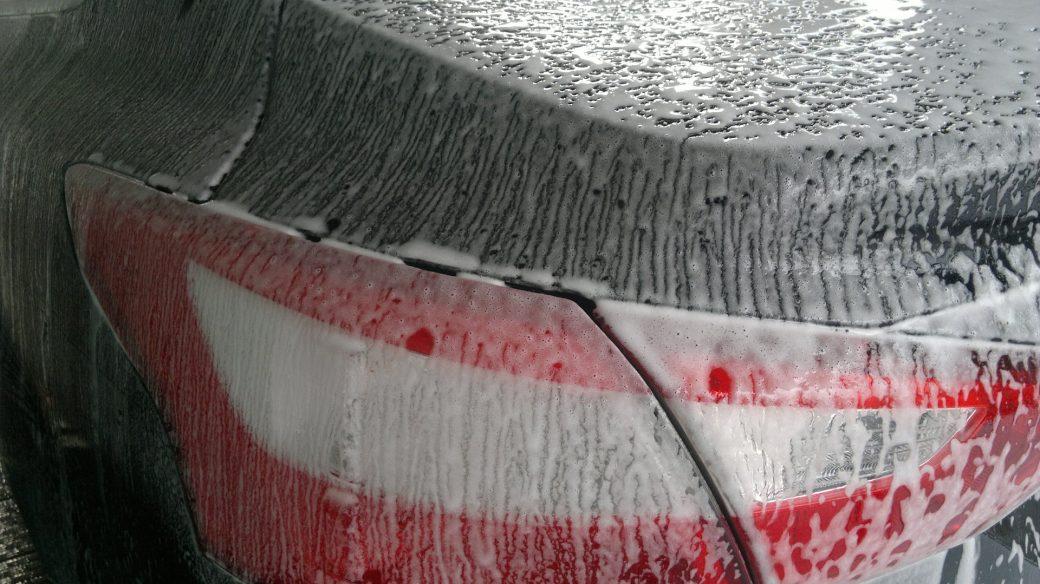
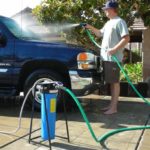

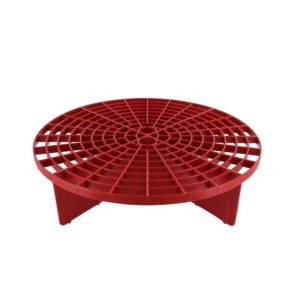
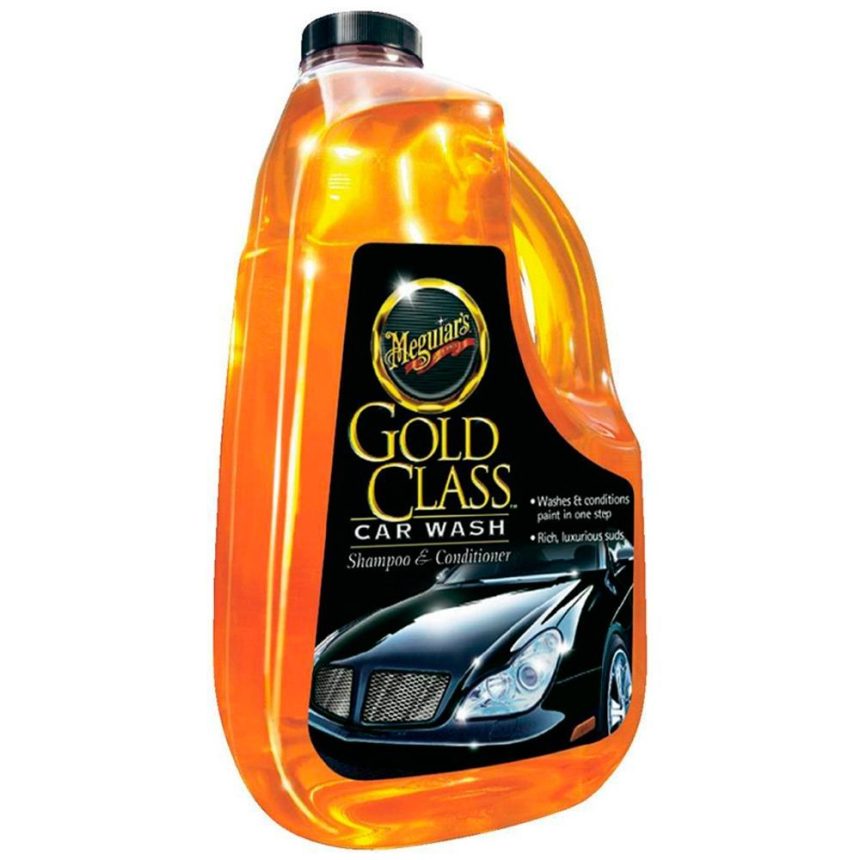




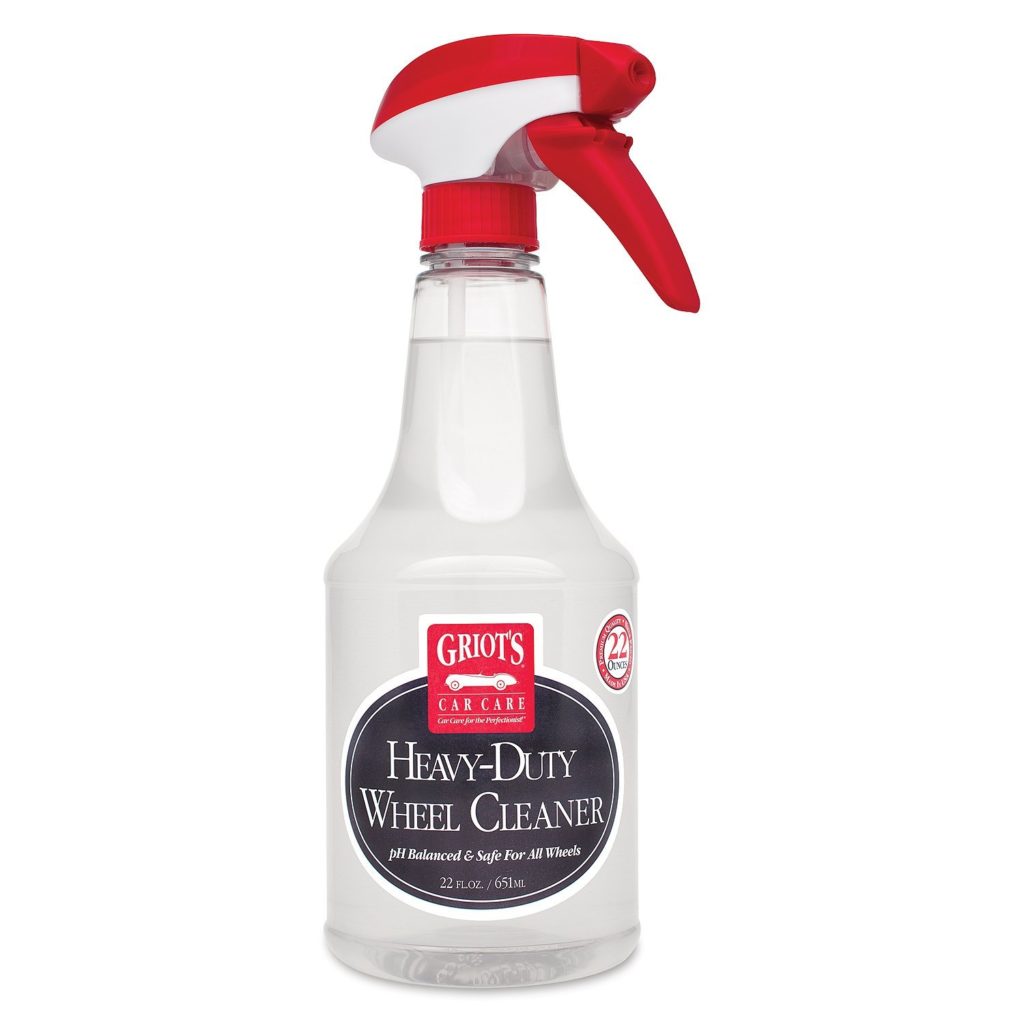

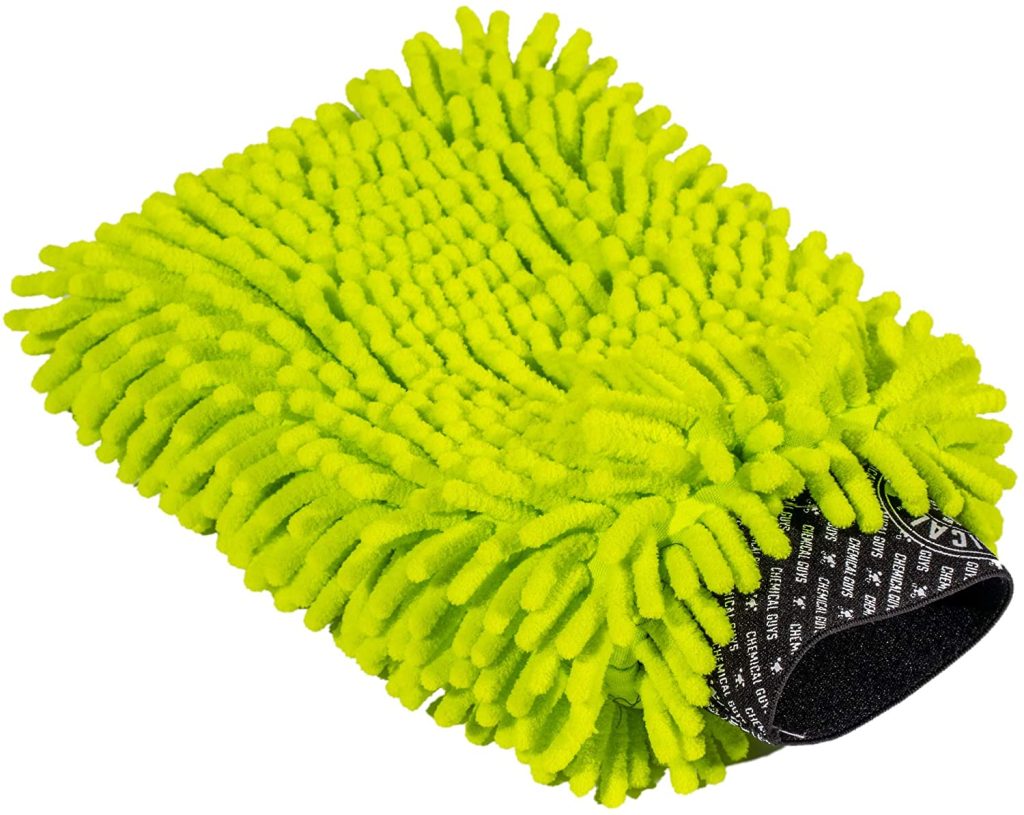
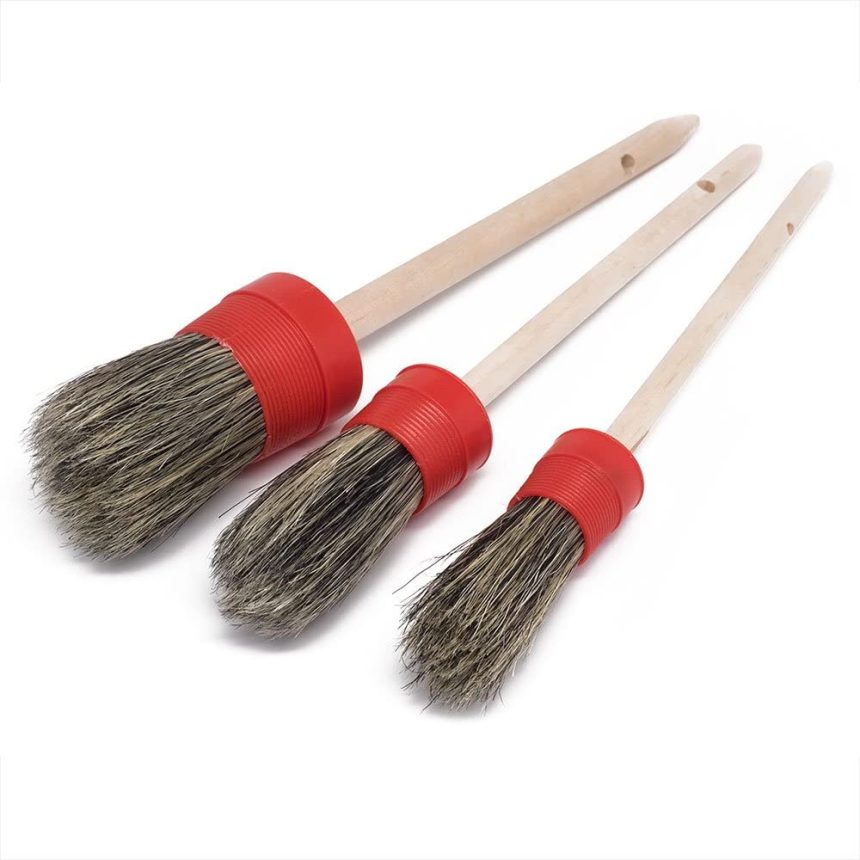
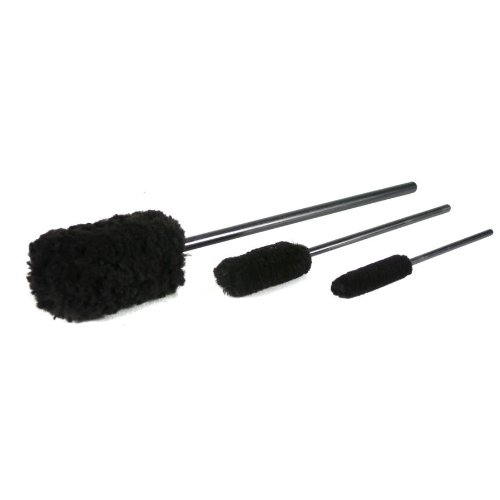

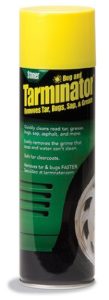

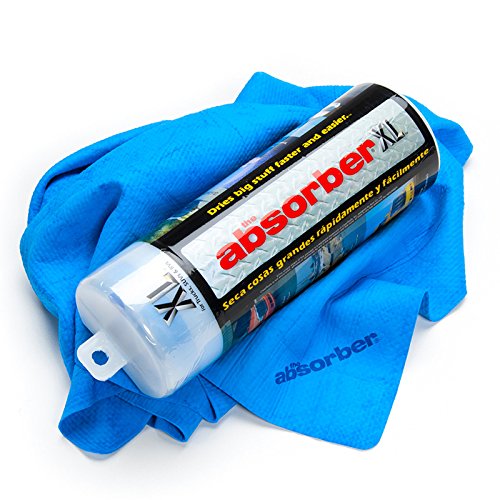
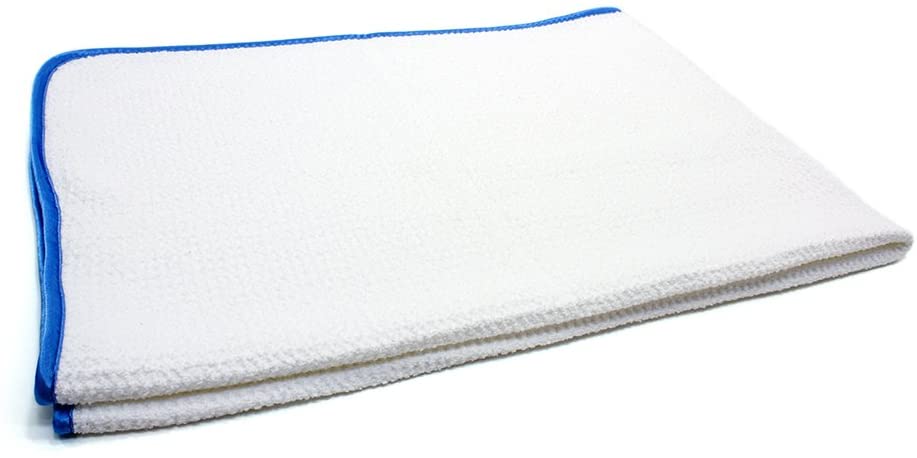
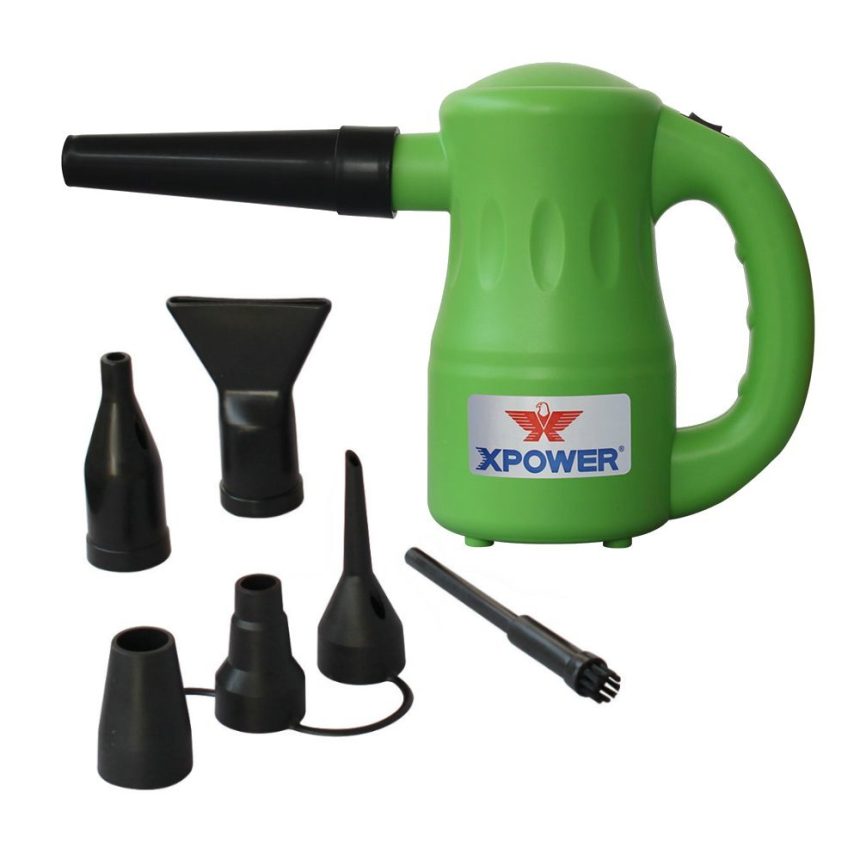
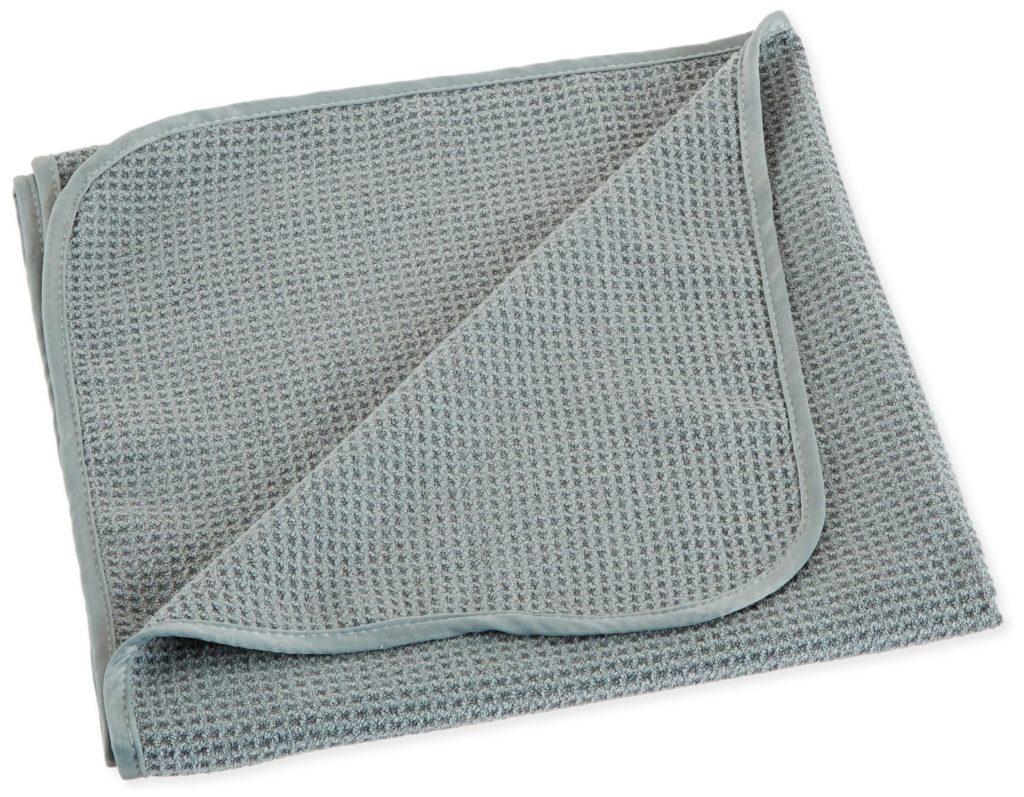
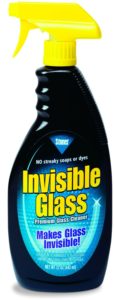
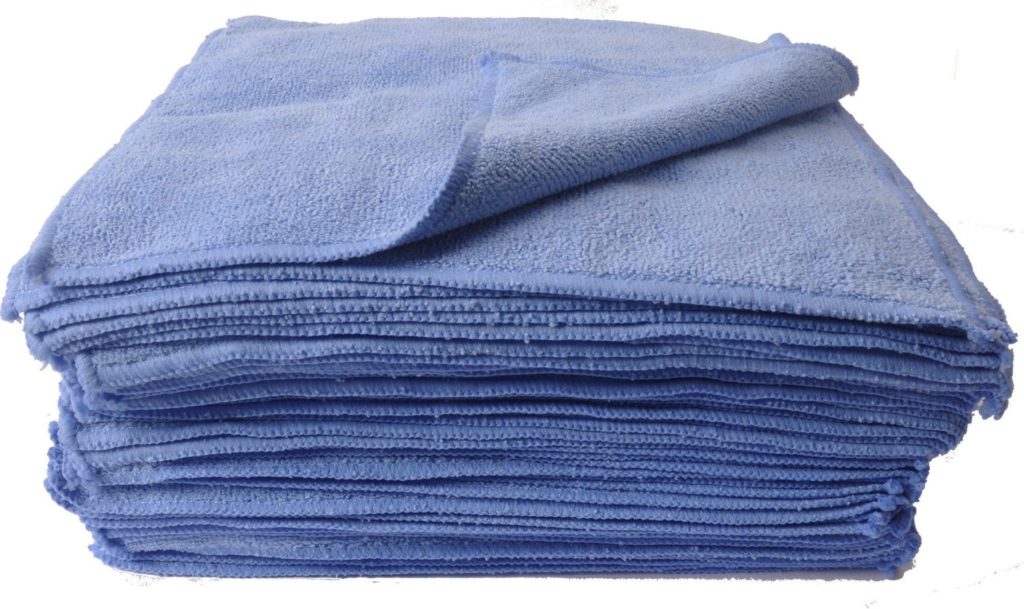

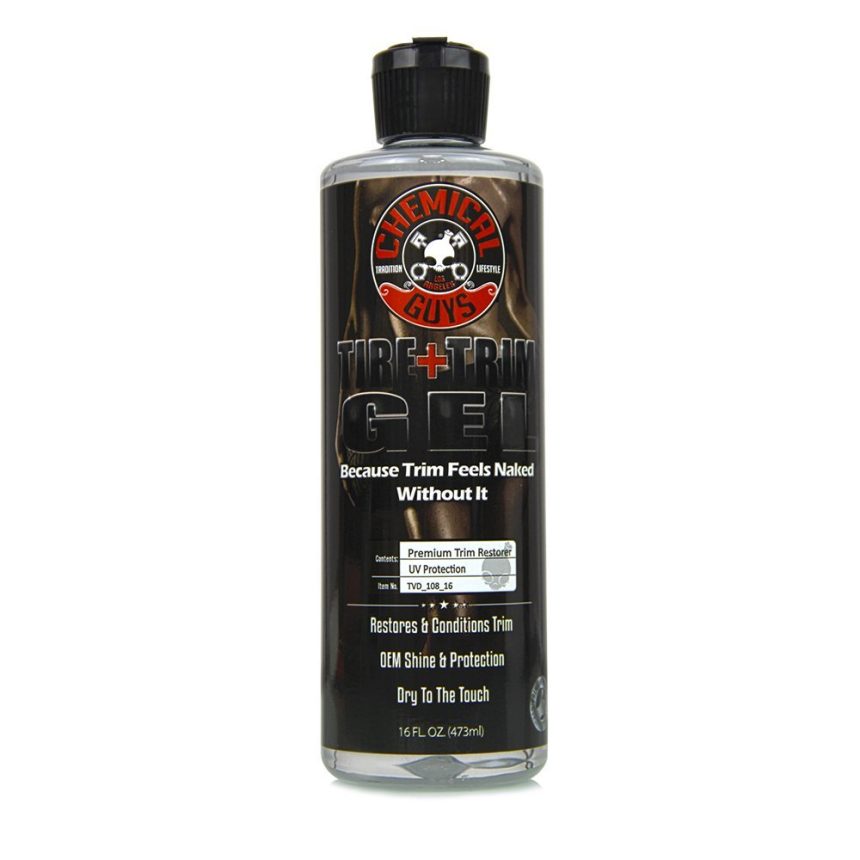
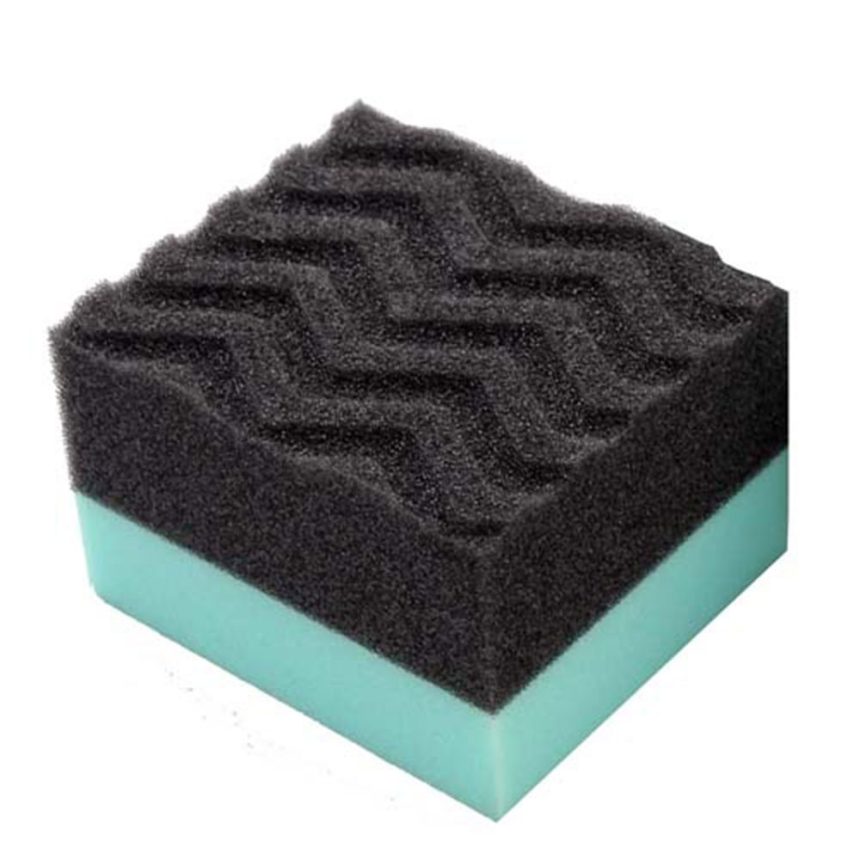
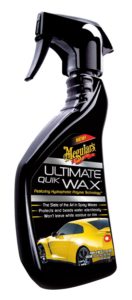
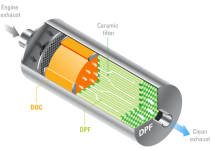
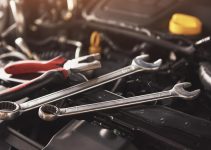


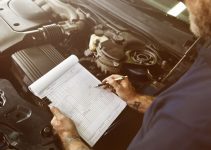
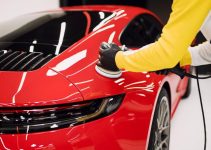
Nice detailed article but now I have to convince my “boss” why I need all this new stuff to keep her and my cars clean. Gee thanks!
Thanks, Joe. Keep in mind that a professional detail can run upwards of the $200-$250 total the cleaners and brushes mentioned in this article will cost you. Plus, they’ll last quite some time. Good luck with the “boss!” ?